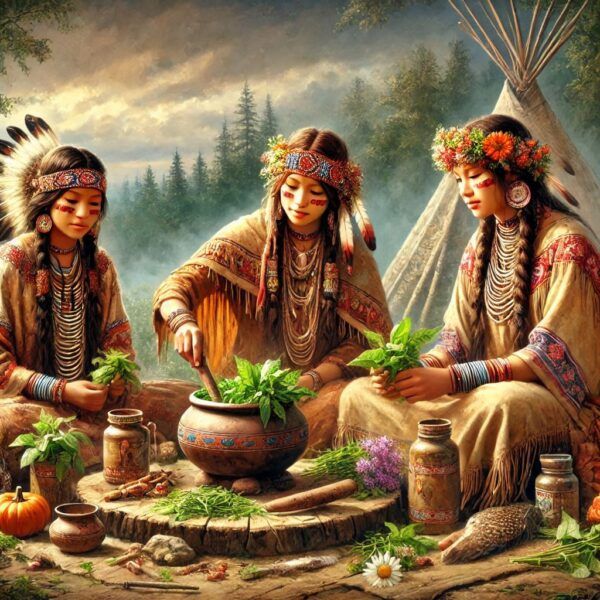
Natural healing is seeing a revival as more people look for alternatives to conventional medicine. Herbal remedies stand out in this trend, drawing attention for their holistic approach to health. With roots deeply embedded in history, these natural solutions have served humanity for centuries.
Every civilization across the globe has, in its own way, harnessed the power of plants for healing. From ancient Egyptians to the indigenous tribes of the Americas, herbal medicine has featured prominently in maintaining health and wellness. What’s fascinating is how these traditional practices still resonate today.
But what exactly makes herbal remedies valuable? It’s their multifaceted benefits. Herbal medicines aren’t just about treating ailments—they support a lifestyle focused on mindfulness, prevention, and caring for one’s whole being. These remedies often work gently, improving physical health while boosting emotional and mental balance, a truly holistic approach.
As you journey through the wide world of herbal remedies, it’s important to approach these natural options with an informed mindset. Advisors in holistic health can offer valuable insights and tailor guidance to fit individual needs. Consider this exploration a partnership between nature’s wisdom and your modern life goals.
Comfrey: Nature’s Versatile Healer

Comfrey, often celebrated for its healing properties, has been a trusted ally in the world of herbal remedies. Known for its deep roots and vibrant leaves, this plant has been used for centuries to aid in the healing of injuries and inflammatory conditions. Traditional use often touted its ability to “knit bones” back together, highlighting its historical nickname, knit-Bone. When a limb was broken they would re seat and make little cuts on the top side of the comfrey leaves and wrap the area of the break with the leaves top side down and wrap it up with bandage and the break would heel in a couple weeks.
So, what exactly is common comfrey good for? It’s primarily recognized for its potent anti-inflammatory and pain-relieving properties. Comfrey’s high content of allantoin, a compound that promotes cell generation, makes it particularly valuable in speeding up the healing of wounds, sprains, and even fractures. Its topical applications include salves and poultices, which have been used to soothe skin conditions and promote faster recovery from bruises and other injuries.
Native American populations regarded comfrey highly, incorporating it into their healing practices. It was traditionally used not just for topical applications, but sometimes brewed into a tea for internal ailments. However, it’s important to approach ingestion cautiously due to comfrey’s alkaloid content, which can be harmful to the liver when consumed in large quantities. Current recommendations advise against ingesting comfrey in any form to avoid these potential risks.
For those interested in harnessing comfrey’s benefits, using it topically is considered safe and effective. It’s commonly found in creams and ointments designed for external use, making it accessible for anyone looking to integrate natural remedies into their routine. Remember to do a patch test for potential allergies and consult a healthcare professional before starting any new herbal regimen.
As with many powerful herbs, comfrey should be used thoughtfully. Its effectiveness as a wound healer is notable, but as with all things, moderation and informed use are key. Whether you grow it yourself or buy products containing comfrey, it can be a beneficial part of a holistic healing toolkit.
Ancient Wisdom: Native American and Chinese Healing Plants

Exploring the world of herbal medicine, Native American and Chinese traditions stand out with their deeply rooted knowledge of plants. These cultures have long viewed nature as a source of healing, and their herbal practices emphasize treating the body and mind as a whole.

Native American tribes were pioneers in utilizing local flora for medicinal purposes. They recognized the value of plants like Yarrow, used for its anti-inflammatory prowess, and Echinacea, a natural immune booster. Another key player in their natural pharmacopeia was Willow Bark, often chewed or brewed into teas to relieve pain and reduce fever, long before aspirin came into play.
Turning to the East, Chinese medicine offers a rich tapestry of herbal wisdom that dates back thousands of years. Traditional Chinese Medicine (TCM) continues to play a vital role in healthcare, with herbs such as ginseng, known for its energy-boosting properties, and ginger, celebrated for aiding digestion and reducing nausea. These herbs are used individually or combined into potent formulations tailored to the user’s specific needs.
The holistic approach seen in both Native American and Chinese healing practices is all about balance. For instance, Native Americans would often combine spiritual rituals with herbal medicine to foster healing on a deeper level, while TCM places a strong focus on restoring harmony through the balancing of Qi, the body’s vital energy.
Incorporating these ancient practices can inspire modern approaches to wellness. Herbal teas, supplements, and even spiritual practices grounded in these traditions provide diverse ways to engage with these cultures’ wisdom. However, always seek guidance from knowledgeable herbalists or healthcare providers to ensure safe and effective use.
The beauty of exploring these healing traditions lies in their integration of mind, body, and spirit. By looking back at how these age-old practices used plants wisely, we can enrich our understanding and application of natural remedies in today’s world.
The Powerhouses: Most Potent Healing Herbs
Some herbs stand out as true powerhouses in the realm of natural healing. Known for their strong therapeutic effects, these plants have been used for generations to treat a wide range of ailments. Their enduring popularity speaks volumes about their effectiveness and versatility.

To kick things off, let’s talk about Turmeric. This vibrant yellow spice contains curcumin, a compound renowned for its significant anti-inflammatory and antioxidant properties. Turmeric’s benefits are well-documented, supporting everything from joint health to brain function. It can be enjoyed in many ways, from seasoning food to mixing into teas and smoothies.

Another powerful herb is Garlic. It’s more than just a kitchen staple; garlic is celebrated for its ability to support cardiovascular health and boost immune function. Allicin, its active component, is where most of its health benefits stem from, making garlic a must-have in any wellness-focused diet.

Echinacea or Corn Flower earns its place on this list with its ability to enhance immune response, often used as a natural remedy to ward off colds and infections. This herb is available in various forms, like teas, capsules, and tinctures, offering flexibility in how you incorporate it into your daily routine.

Elderberry stands out for its antiviral properties. It’s a popular go-to during flu season, believed to reduce the severity and duration of symptoms. Elderberry syrup and lozenges are common preparations, offering delicious and practical ways to harness its benefits.
Integrating these potent herbs into your lifestyle doesn’t have to be complicated. Start with the herbs that best align with your health goals and explore recipes or supplements that incorporate them. Keeping informed about potential interactions and recommended dosages is crucial, ensuring that you maximize benefits while minimizing risks.
The beauty of these powerhouse herbs lies in their versatility and accessibility. Whether you’re new to herbal remedies or a seasoned enthusiast, these plants offer a natural path to bolster your well-being, promote health, and prevent illness.
The Essential Healing Garden: Best Plants for Health
Cultivating a personal healing garden offers more than just the benefit of having fresh herbs at your fingertips—it’s a holistic practice that nurtures both your physical health and mental peace. Whether you have a sprawling backyard or just a small balcony, growing healing plants can fit any space.

To start your own healing garden, consider including a selection of versatile herbs that address various health needs. Lavender, known for its calming effects, can be used to make soothing teas or as an aromatic addition to your living space. Another excellent choice is peppermint, which aids digestion and can freshen up anything from drinks to salads.

Aloe Vera is a must-have for its remarkable skin-healing properties. It’s perfect for treating minor burns and cuts, with the added bonus of being incredibly easy to grow. Similarly, Calendula stands out for its ability to heal and promote skin health; its bright blooms add a splash of color to your garden while being a skin-saving staple.
Beyond these essentials, consider adding Rosemary and Sage. Both offer wonderful culinary uses, along with health benefits such as enhancing memory and possessing antimicrobial properties. Having these herbs on hand encourages you to use them in everyday cooking, bringing health benefits naturally into your diet.
Maintaining a healing garden doesn’t require extensive gardening knowledge. Most medicinal herbs are quite resilient and can thrive with basic care—adequate sunlight, occasional watering, and some pruning. As these plants grow, you can harvest them continuously, ensuring a fresh supply that supports a healthy lifestyle.
Creating your own healing garden can be a rewarding endeavor that boosts your well-being on multiple levels. It allows you to connect with nature, reduce stress, and cultivate a sustainable resource for your health needs. Through this practice, you can harness the power of plants right in your own home.
Embracing Herbal Remedies for Holistic Health

Engaging with herbal remedies is about more than just using plants for health benefits—it’s a journey towards embracing a more holistic lifestyle. As you’ve seen through their historical uses and modern applications, these remedies offer a bridge between ancient wisdom and contemporary knowledge. By learning from traditional practices and incorporating them wisely, we can leverage the full potential of herbal healing.
The beauty of herbal remedies lies in their ability to support a wide range of health goals, from boosting immunity to alleviating stress. As you consider integrating herbs into your life, it’s helpful to stay informed through reliable books and expert advice. A trusted herbalist or healthcare provider can offer personalized guidance, ensuring the practices you adopt are safe and effective.
It’s also important to balance herbal remedies with a holistic approach to wellness that includes a healthy diet, regular exercise, and mindfulness practices. Herbs can be a powerful tool in maintaining health, but they work best when part of a comprehensive lifestyle strategy that promotes overall well-being.
The journey into herbal remedies doesn’t require an all-or-nothing approach. Start small, experiment with a few key herbs that resonate with your health needs, and observe how your body responds. Over time, you’ll find the right balance that supports you physically, emotionally, and mentally.
Whether you’re drawn to the vibrant hues of a healing garden or the soothing properties of herbal teas, remember that this path is about exploring and finding what works best for you. Embrace these natural options with curiosity and care, letting them enrich your journey towards a healthier, more balanced life.

